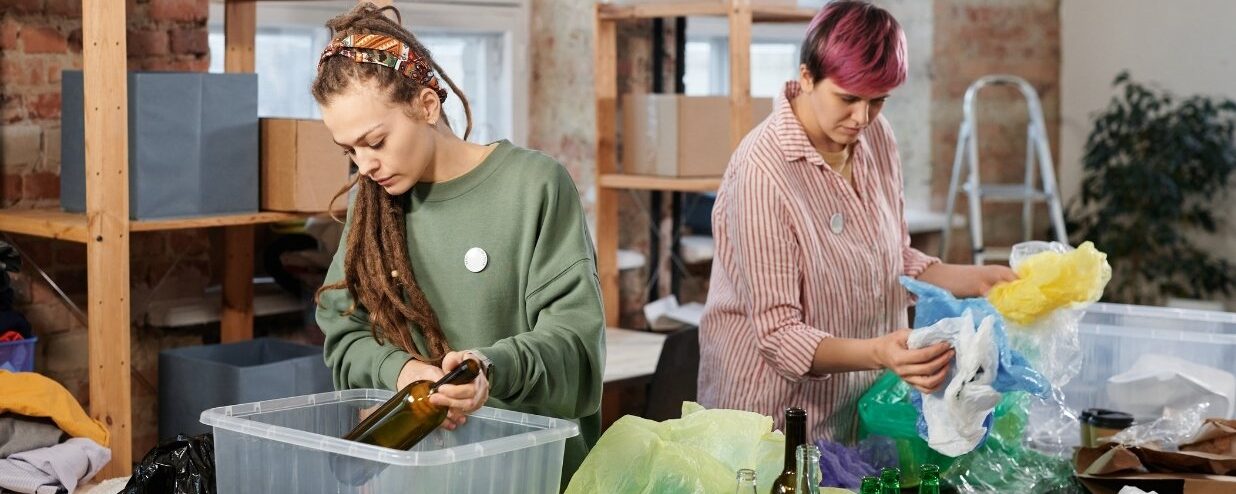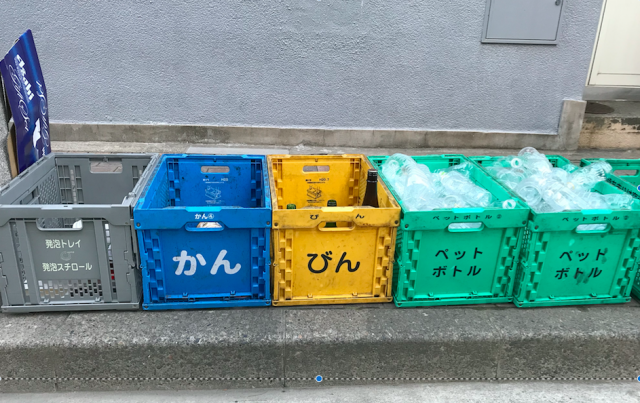Throwing Out Garbage In Japan
Garbage is not just something you can throw away easily, there is a large level of preparation needed before you can pitch things out in the bin and it pays to understand it so that you can make sure your neighbors are pleased with you. 🙂
I mean, the Japanese have got to love the environment to have even dedicated a holiday to nature known as Greenery Day!
In this handy guide – we will explain the ins and outs of throwing things out, including how to clean your trash and separate it, as well as the vocabulary that you will need to understand signs associated with it. We will also go over how to throw out oversized garbage, including how to schedule a pickup and where to purchase the stickers you need for a pickup.
Regular Garbage
Recyclables
Plastic Container Recyclables
Non-burnable Garbage
Oversized Garbage
Common Garbage Vocabulary Terms
Regular Garbage
In Japan, regular or non-recyclable garbage is referred to as 燃やすごみ (moyasu gomi) or 可燃ごみ (kanen gomi). Both refer to burnable trash. Items that are considered burnable trash are things like food waste, old clothes, and paper waste.
The term 生ごみ (nama gomi) is used to describe kitchen waste, such as fruit/vegetable peel, egg shells, and any other food item that may leave an unpleasant odor if left in the trash for too long. Japanese people often separate their 生ごみ (nama gomi) or raw garbage in a separate bag and throw it out right away or wrap it up in a newspaper to prevent bad smells. This is particularly important in the summer as Japan’s summers can get quite humid and hot.
燃やすごみ (moyasu gomi) is usually picked up by the city twice per week. Depending on where you live, there may be a garbage room where you can leave your trash at any time or you may have to take out the trash on your own. If you have to do it on your own, you’ll likely see an area on the street where people leave their trash out on the morning of pick up days. There’s usually a net covering the trash to prevent crows from getting to the trash. Please also take note of the time you need to take the trash out by. In most cities, you should take out the trash by 8AM.
Recyclables
Recyclables are referred to as 資源ごみ (shigen gomi). Recycling is a bit of a big deal in Japan. In Japan, you are expected to separate your recyclables into these three different types: カン (kan): cans, びん (bin): glass bottles, and ペットボトル (petto botoru): plastic bottles. In Japan, it is best practice to take off the wrapping of plastic bottles before recycling. Most manufacturers in Japan perforate the wrapping on their bottles to make it easier for the consumer to take off the wrapping.
In some cities, foam trays and boxes are included in this type of trash and should be taken out with cans, glass bottles, and plastic bottles.
Cans, glass bottles, and plastic bottles are usually picked up once a week on a designated day of the week. If you must take out the trash on your own, you can leave your recyclables in a designated area on the street on the mornings of pick up days.
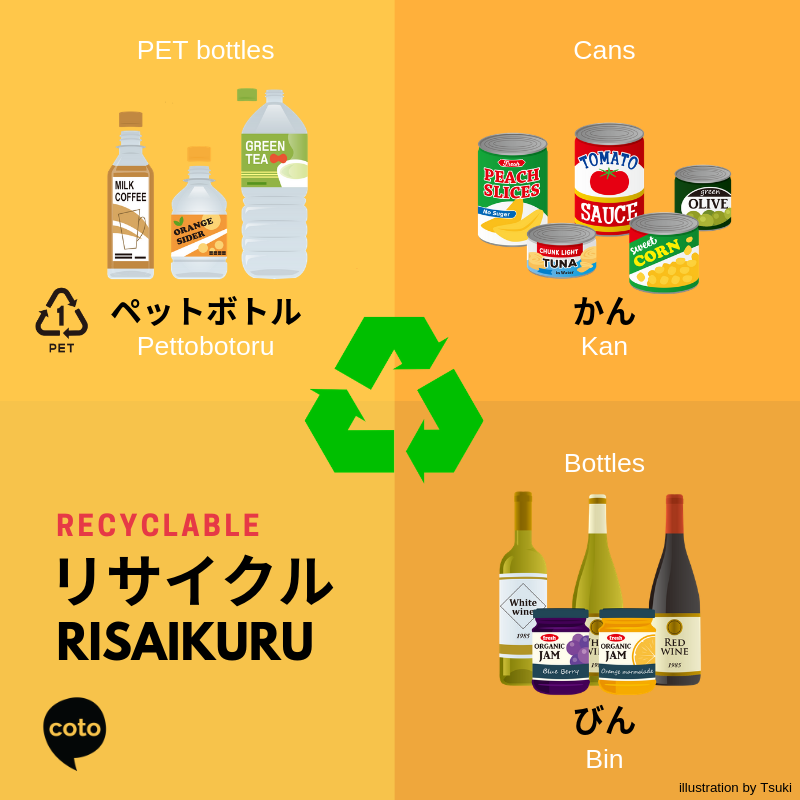
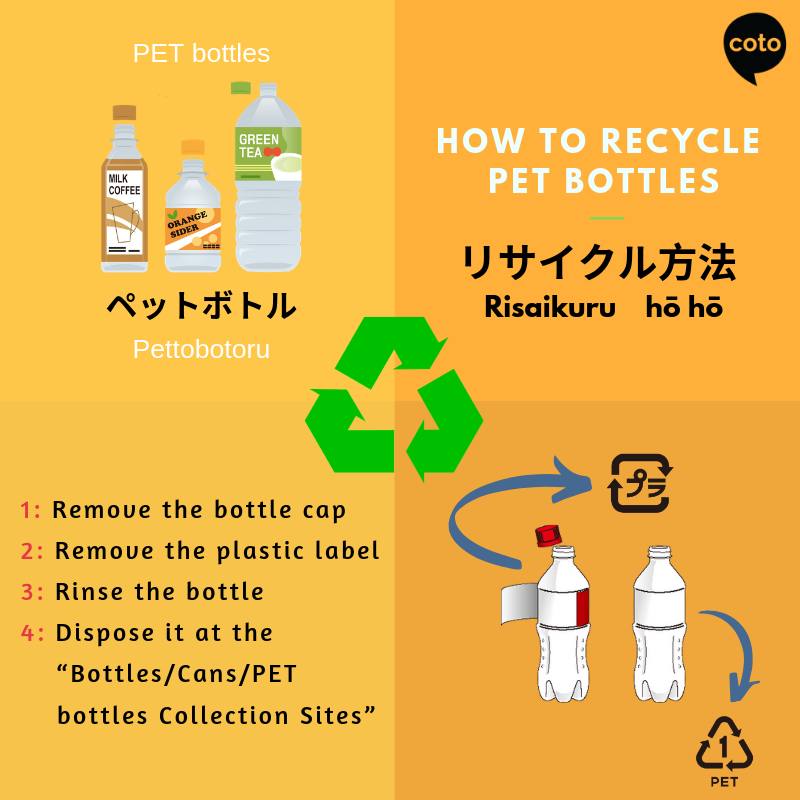
Plastic Container Recyclables
In Japan, there is also a class of garbage called 容器包装リサイクル (youki housou risaikuru) which refers to plastic items that have this particular mark on them. Examples of items in this class include plastic shampoo bottles, plastic food trays, and plastic yogurt containers. You should wash and clean these items before sending them out for recycling.
Depending on the city, the designated day for taking out this type of recycling may be different from the cans/plastic bottles/glass bottles day.
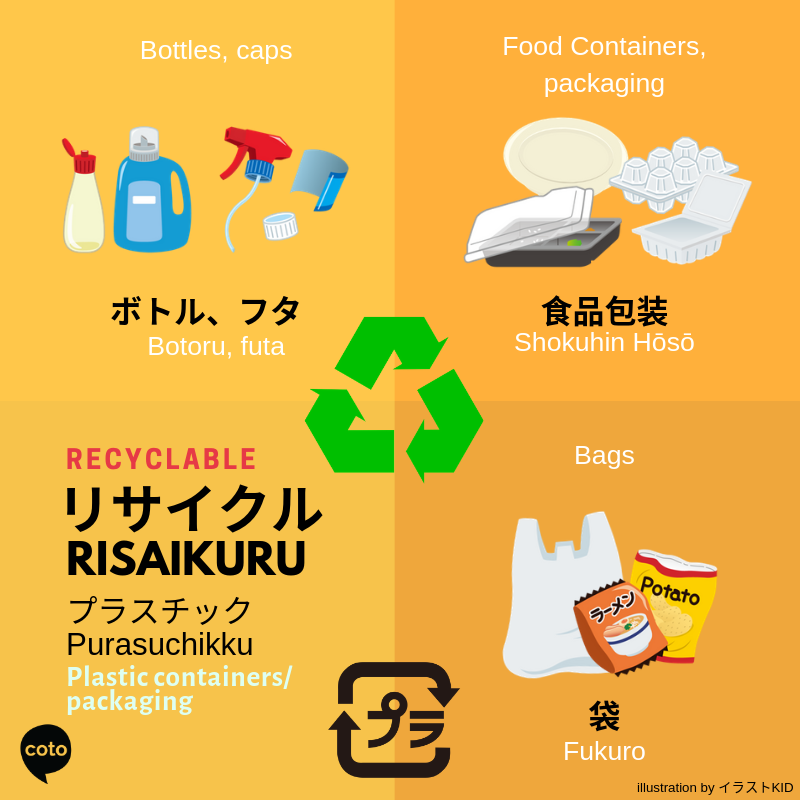
Click to tweet!
Non-burnable Garbage
There is another type of trash called 燃やさない (moyasanai gomi) or 不燃ごみ (funen gomi) in Japan. Both mean non-burnable trash. Items in this category require more careful handling as they could be dangerous to the environment or people. Examples of 燃やさないごみ (moyasanai gomi) are glass materials (such as light bulbs, glass containers for makeup or medications), spray cans, cooking pans, knives and lighters.
燃やさないごみ (moyasanai gomi) is usually picked up twice a month in most cities, usually designated as something like the first and third Friday.
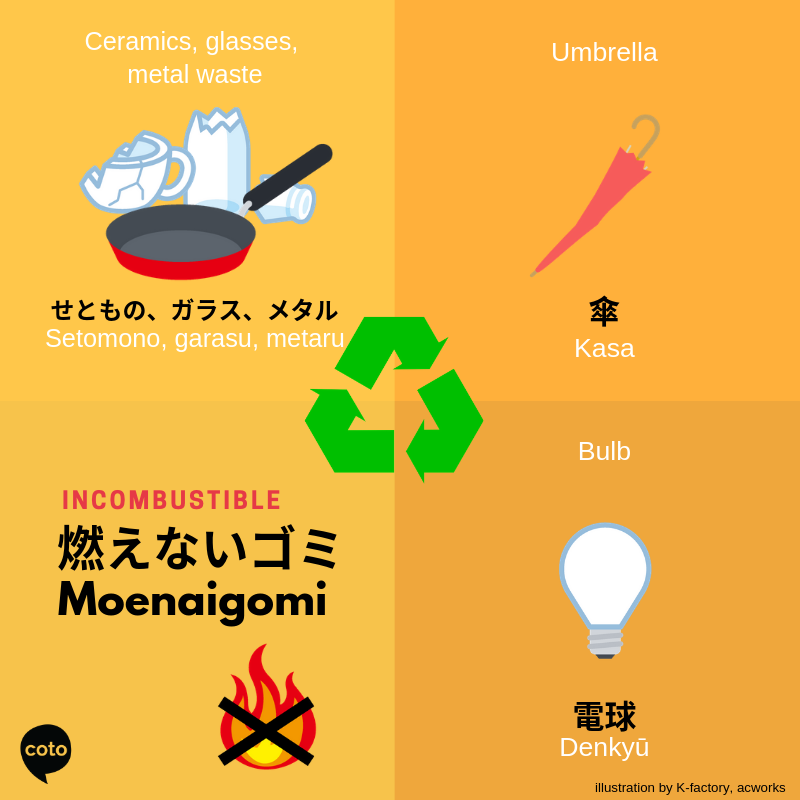
Oversized Garbage
Oversized garbage is called 粗大ごみ (sodai gomi) in Japanese. Each city may have a different definition of what is considered 粗大ごみ (sodai gomi), but it’s usually items over ~30 centimeters in length. Compared to other countries, Japan’s system of throwing out oversized garbage can be quite complicated and you must pay for these services.
Let’s say you want to throw out an old bicycle, you would first have to call or sign up online for a pickup appointment. For disposal of a bicycle, it would cost about 800 yen in Tokyo. After you make your appointment, you will be informed of what type of stickers, or 粗大ごみ処理券 (sodai gomi shori ken) to buy. These stickers are applied to your 粗大ごみ (sodai gomi) as proof of purchase of disposal services. You can buy these stickers from most of your neighborhood convenience stores. On the appointed day of pick up, you can place these stickers on your bike and place it outside for pick up. All that to throw away an old bicycle!
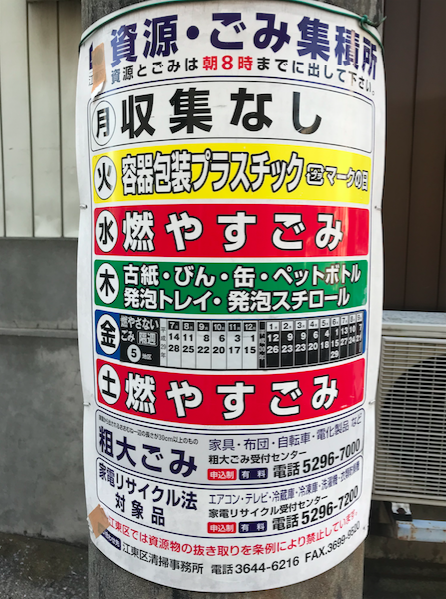
If you moved into a new place, and don’t know where to put the trash away, you can ask real estate agent or landlord,
EX.
「すみません、ゴミはどこに出せばいいですか?」Where should I put the trash away?
Common Garbage Vocabulary Terms
ごみを出す (gomi o dasu ) – put garbage away
資源 (shigen), リサイクル – recycle
容器包装 (youki housou)- plastic containers
ごみ を分別する (bunbetsu suru) – to separate trash
ごみ を収集する (shuushuu) – to collect trash
発砲トレイ (happou torei) – foam tray
発砲スチロール (happou suchiro-ru) – foam boxes
古紙 (koshi) – used paper
びん (bin) – glass bottle
缶 (kan) – can
ペットボトル (petto botoru) – plastic bottle
粗大ごみ (sodai gomi) – oversized garbage
粗大ごみ処理券 (sodai gomi shori ken) – oversized garbage disposal sticker
燃やすごみ (moyasu gomi) – burnable garbage
可燃ごみ (kanen gomi) – burnable garbage
燃やさないごみ (moyasanai gomi) – un-burnable garbage
不燃ごみ (funen gomi)- un-burnable garbage
生ごみ (nama gomi)- raw garbage
The rules for garbage in Japan are determined by each city and may differ from place to place.
An Additional Note: If you’d like to help keep the environment sustainable and green, remember to refuse the use of plastic bags and convenience stores! A little goes a long way!
If you find this article helpful, click to tweet and share with others living in Japan!
